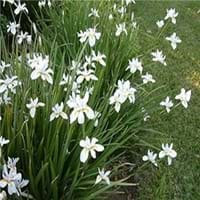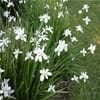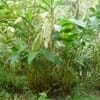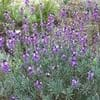Life Span
Perennial
Perennial
Type
Tender Perennial
Bulb or Corm or Tuber
Origin
Southern Asia
Southern Africa, South Africa
Types
African iris, Large wild iris, Cape iris
Cusick's camas, large camas
Habitat
Coastal Regions, Forest margins, Slopes
meadows, moist forests, Open Plains
USDA Hardiness Zone
9-11
8-10
AHS Heat Zone
12-10
Not Available
Sunset Zone
H1, H2, 8, 9, 12, 13, 14, 15, 16, 17, 18, 19, 20, 21, 22, 23, 24
21,22
Habit
Clump-Forming
Rosette/Stemless
Flower Color
White, Yellow, Blue, Violet
White, Yellow, Red, Blue, Purple, Pink, Lavender, Violet
Flower Color Modifier
Bicolor
Bicolor
Fruit Color
Green, Brown
Not Available
Leaf Color in Spring
Green, Gray Green
Green
Leaf Color in Summer
Green, Gray Green
Light Green
Leaf Color in Fall
Green, Gray Green
Several shades of Green
Leaf Color in Winter
Light Green
Light Green
Leaf Shape
Grass like
Long slender
Plant Season
Spring, Summer, Fall, Winter
Spring, Winter
Sunlight
Full Sun, Partial Sun, Partial shade
Full Sun, Partial Sun
Growth Rate
Medium
Medium
Type of Soil
Clay, Loam, Sand
Loam
The pH of Soil
Acidic, Neutral, Alkaline
Acidic, Neutral
Soil Drainage
Average
Well drained
Bloom Time
Indeterminate
Early Spring, Spring, Late Winter, Indeterminate
Tolerances
Drought
Black Walnut Toxicity, Rabbit, Shade areas
Where to Plant?
Ground
Container, Ground, Pot
How to Plant?
Seedlings, Stem Cutting, Stem Planting
chipping, Offsets, scooping, Twin scaling, Vegetative
Plant Maintenance
Medium
Low
Watering Requirements
Average Water Needs, Water more in summer
Medium
In Summer
Lots of watering
Lots of watering
In Spring
Moderate
Moderate
In Winter
Average Water
Average Water
Soil pH
Acidic, Neutral, Alkaline
Acidic, Neutral
Soil Type
Clay, Loam, Sand
Loam
Soil Drainage Capacity
Average
Well drained
Sun Exposure
Full Sun, Partial Sun, Partial shade
Full Sun, Partial Sun
Pruning
Cut or pinch the stems, Remove damaged leaves, Remove dead branches, Remove dead leaves, Remove dead or diseased plant parts, Remove deadheads, Remove short twigs, Remove wet foliage
Remove damaged leaves, Remove dead branches, Remove dead leaves
Fertilizers
Apply N-P-K
All-Purpose Liquid Fertilizer, General garden fertilizer, Time release fertilizer
Pests and Diseases
Red blotch
Pests and diseases free
Plant Tolerance
Drought
Black Walnut Toxicity, Rabbit, Shade areas
Flower Petal Number
Single
Single, Double, Semi-Double
Foliage Texture
Medium
Medium
Foliage Sheen
Matte
Glossy
Attracts
Bees, Butterflies, Flying insects, Insects
Insects
Allergy
Not Available
Asthma
Aesthetic Uses
Borders, Ground Cover, Showy Purposes, Water gardening
Bouquets, Cottage Garden
Beauty Benefits
Not Available
For treating wrinkles, Remove blemishes, Skin Problems
Edible Uses
Insignificant
Sometimes
Environmental Uses
Air purification, soil stabilisation, Windbreak
Air purification, Forms dense stands, Very little waste
Medicinal Uses
Not Available
Leucoderma, Urinary problems
Part of Plant Used
Flowers
Bulbs, Root
Other Uses
Screen, useful as a ground cover
Animal Feed, Decoration Purposes, Showy Purposes
Used As Indoor Plant
No
Yes
Used As Outdoor Plant
Yes
Yes
Garden Design
Bedding Plant, Bog Garden, Container, Groundcover, Mixed Border, Tropical, Water Gardens
Bedding Plant, Container, Cutflower, Mixed Border, Rock Garden / Wall
Botanical Name
DIETES grandiflora
Hyacinthus orientalis
Common Name
Butterfly Iris
Hyacinth, common hyacinth, garden hyacinth, dutch hyacinth
In Hindi
तितली आइरिस प्लांट
ह्यचीन्थ
In German
Schmetterling Iris Pflanzen
Hyazinthe
In French
Papillon Iris Plante
jacinthe
In Spanish
Planta del iris de la mariposa
jacinto
In Greek
Πεταλούδα Iris Φυτών
υάκινθος
In Portuguese
Borboleta da planta Iris
jacinto
In Polish
Butterfly Iris Roślin
hiacynt
In Latin
Gloria Iris Planta
et hyacinthinas,
Phylum
Magnoliophyta
Magnoliophyta
Class
Liliopsida
Liliopsida
Family
Iridaceae
Liliaceae
Genus
Dietes Salisb
Hyacinthus
Clade
Angiosperms, Monocots
Angiosperms, Monocots
Tribe
Irideae
Not Available
Subfamily
Iridoideae
Scilloideae
Number of Species
Not Available
Importance of Butterfly Iris and Wild Hyacinth
Want to have the most appropriate plant for your garden? You might want to know the importance of Butterfly Iris and Wild Hyacinth. Basically, these two plants vary in many aspects. Compare Butterfly Iris and Wild Hyacinth as they differ in many characteristics such as their life, care, benefits, facts, etc. Every gardener must at least have the slightest clue about the plants he wants to plant in his garden. Compare their benefits, which differ in many ways like facts and uses. The medicinal use of Butterfly Iris is Not Available whereas of Wild Hyacinth is Leucoderma and Urinary problems. Butterfly Iris has beauty benefits as follows: Not Available while Wild Hyacinth has beauty benefits as follows: Not Available.
Compare Facts of Butterfly Iris vs Wild Hyacinth
How to choose the best garden plant for your garden depending upon its facts? Here garden plant comparison will help you to solve this query. Compare the facts of Butterfly Iris vs Wild Hyacinth and know which one to choose. As garden plants have benefits and other uses, allergy is also a major drawback of plants for some people. Allergic reactions of Butterfly Iris are Not Available whereas of Wild Hyacinth have Asthma respectively. Having a fruit bearing plant in your garden can be a plus point of your garden. Butterfly Iris has no showy fruits and Wild Hyacinth has no showy fruits. Also Butterfly Iris is flowering and Wild Hyacinth is not flowering . You can compare Butterfly Iris and Wild Hyacinth facts and facts of other plants too.





